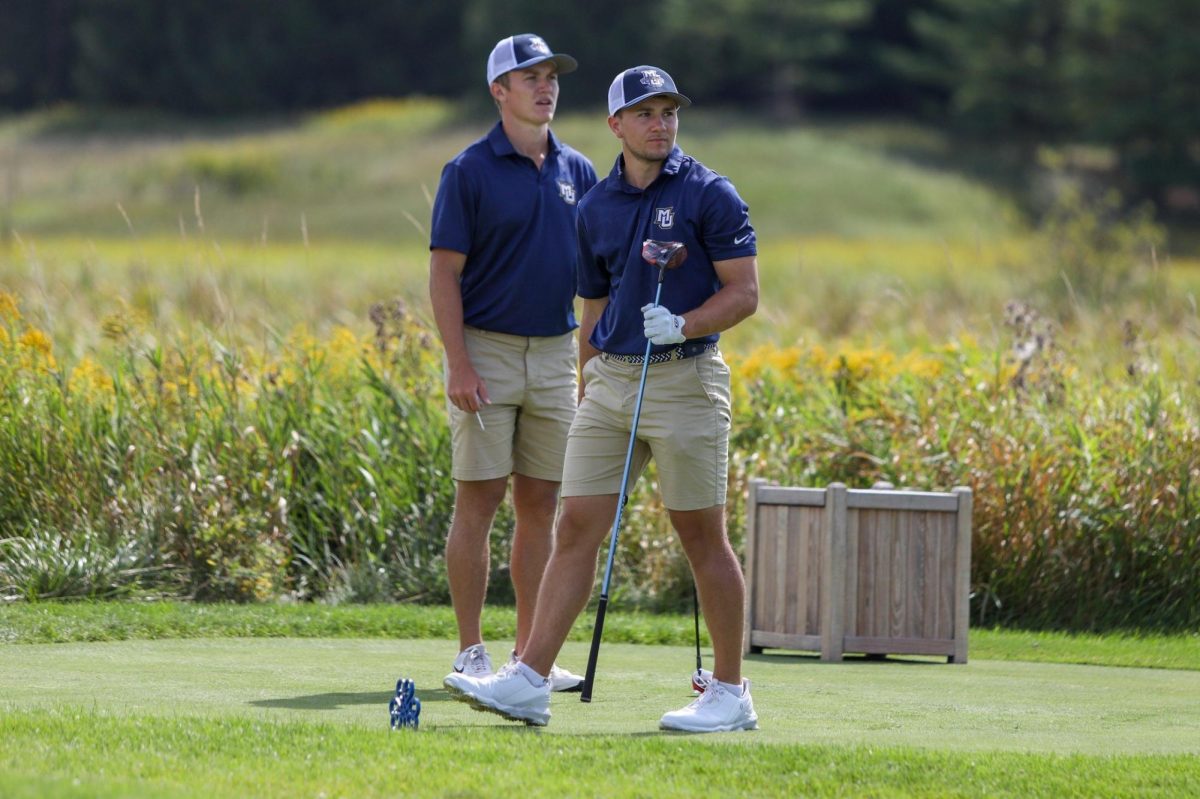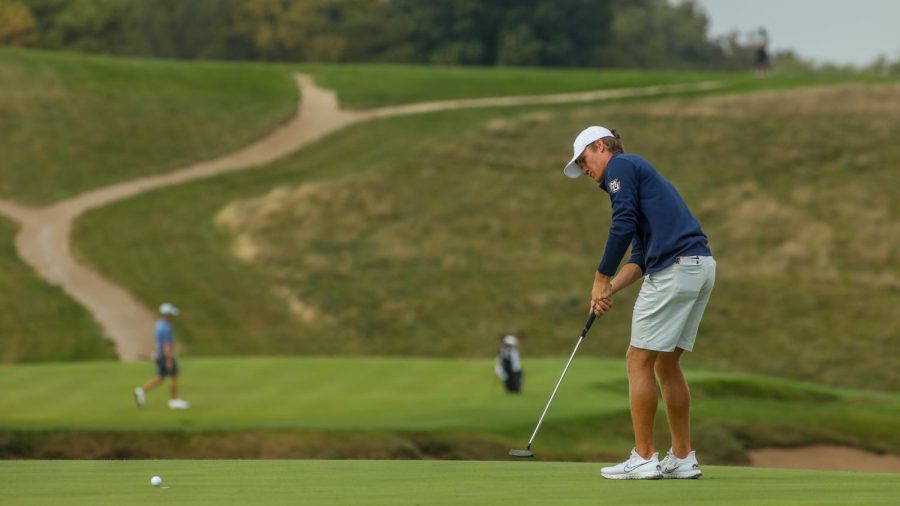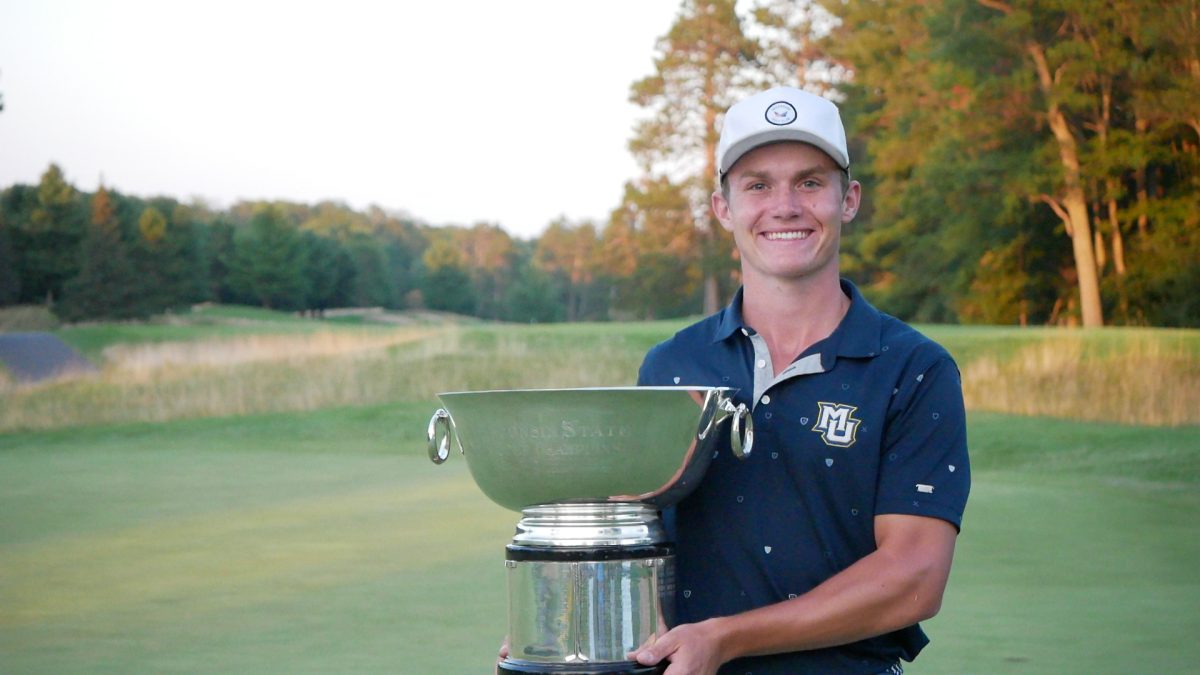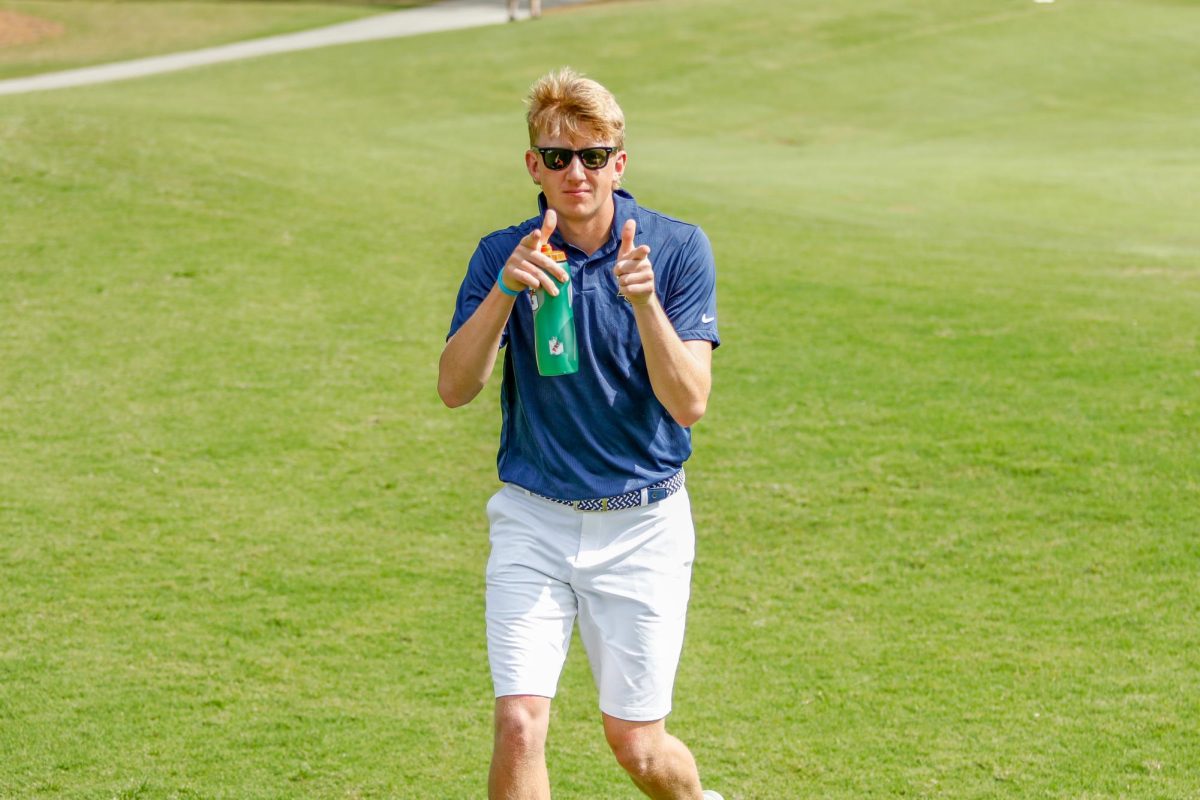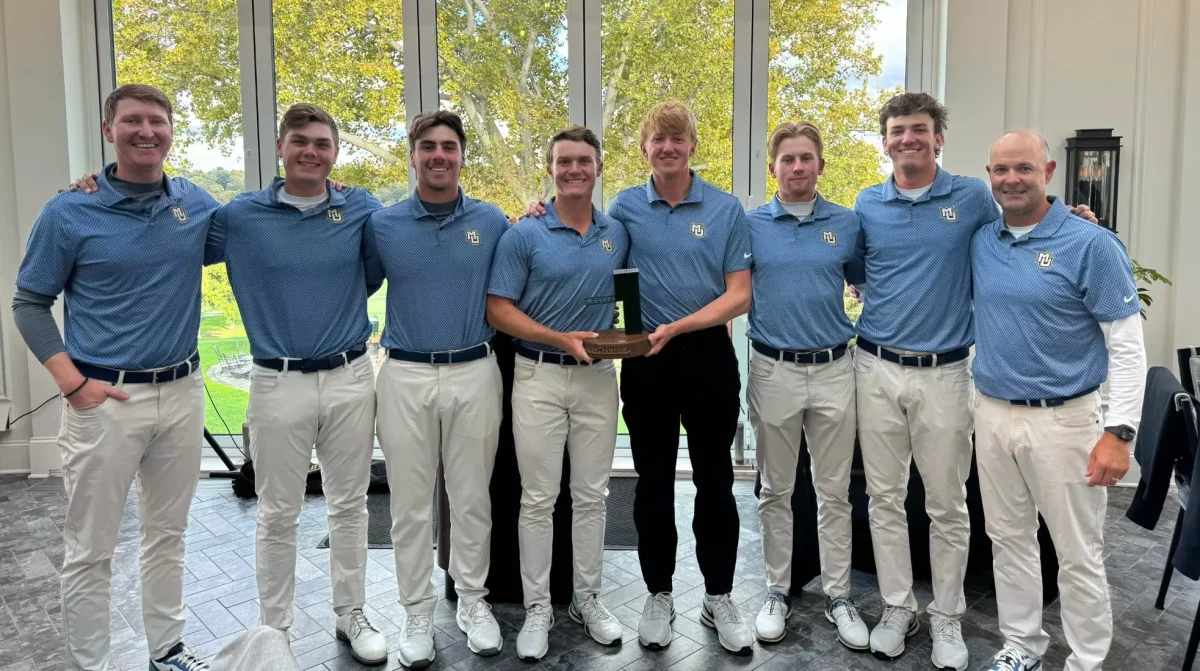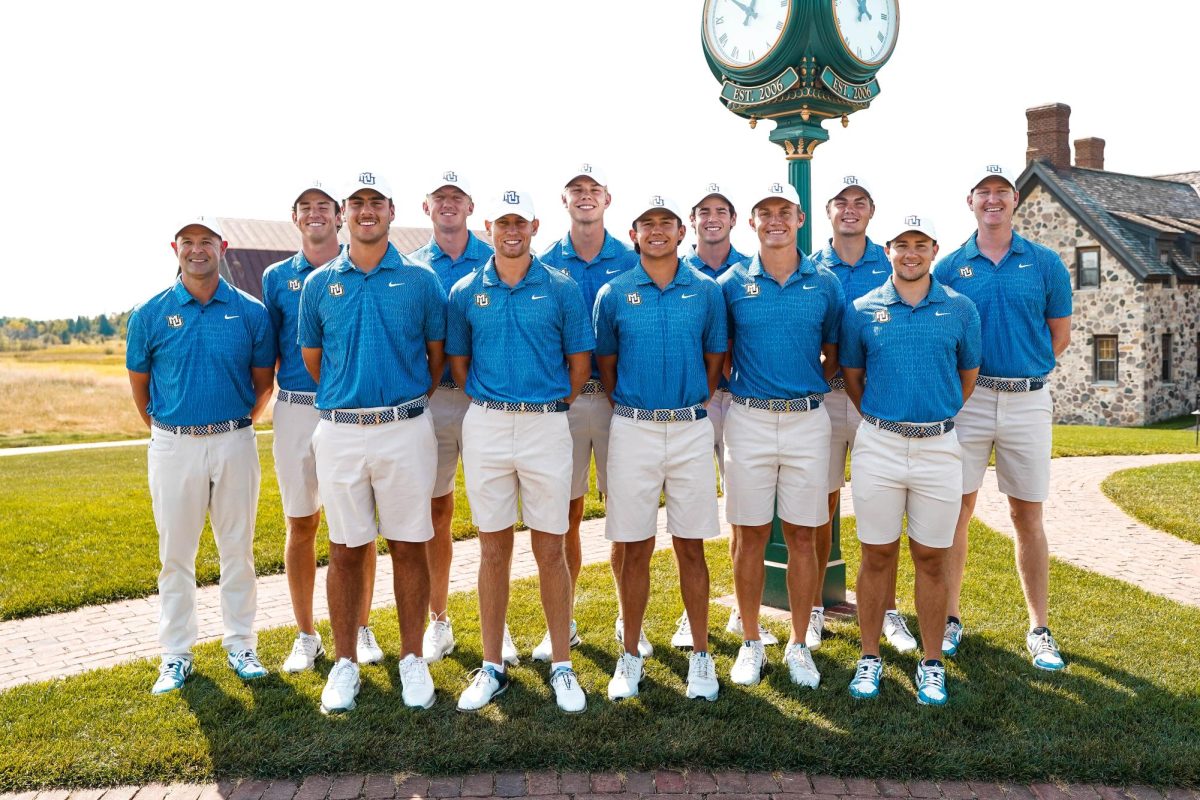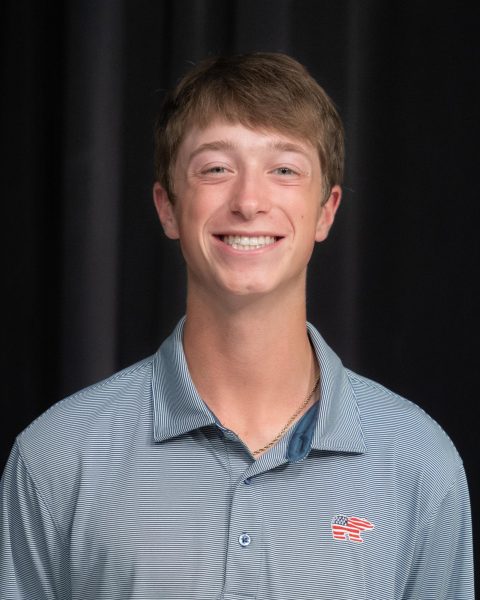The Marquette golf team is not on the level of Matt Fitzpatrick, but it uses different statistics and data to help its members improve their games.
Fitzpatrick, renowned for his unique approach, meticulously tracks advanced data and records every shot in his notebooks.
“Guys on Tour like Fitzpatrick get really deep analytically; they know the ins and outs of what everything means,” assistant coach Jace Long said.
Long said while the team isn’t that religious about its data collection, there are certain numbers he looks at when helping the players mature on the course.
“As coaches, we don’t get to see every shot these guys hit on the course in tournaments, but we track every shot they hit,” Long said. “We basically are getting instant feedback on certain things so we can gameplan and cater our practice for each guy.”
Decade Golf is the software doing the dirty work for Marquette, which the team has used for 12 years now. Junior Patrick Adler said the team members help the coaches create their game plans by inputting their numbers into the system during tournaments.
“Our coaches want us to get our stats in before the team meeting after rounds, so they can get a better idea of how our course management can improve or approach to a different hole can be better,” Adler said.
Those instant feedback statistics can help vault Marquette up the leaderboard in the heat of tournament play.
“Maybe we are hitting to wrong spots around the green and we can go back through and give the guys better information,” Long said. “If we are averaging a 4.74 score on this par-four when the field is averaging a 4.15, we can take a look and change the way we are playing the hole.”
Among the numbers the team tracks, Long said they pay extra attention to the strokes-gained and par-five scoring statistics.
The team was in the upper-echelon in par-five scoring average nationally last season but has seen that average score increase since then.
Junior Max Lyons — who had the squad’s best finish at the Augusta Haskins Award Invitational finishing tied for 20th and even over the tournament — said he approaches the par-fives trying to find the best second-shot landing spot statistically.
“Because of the fast greens, you want to find the fat side,” Lyons said. “The short sides are what can bring in bogeys when you try and get cute. I was really proud of being aggressive to a specific target on the fat side.”
On the flip side, Marquette has continued to be efficient on the greens. The team uses a specialized speed-ratio number that measures how far away a putt is from the hole based on the initial putt.
“We will take them through combines and do simulated putting rounds to track their speed ratio and strokes-gained,” Long, who learned from another coach to quantify putting speed, said.
Lyons said tracking his shots helps him remember what has and hasn’t worked in the past for him.
“It’s easy to refer back to a note on how hard the wind was blowing here and know what you hit and what you felt over that shot,” Lyons said. “So, the next day, it’s no different than what I did yesterday if I’m in a similar spot with similar wind or conditions.”
The numbers help give Lyons confidence in every shot.
“If you can get close to completely trusting that your numbers and aim are perfect, it becomes another golf shot as opposed to hitting and hoping,” Lyons said.
While there is a wealth of statistics and information available to the Marquette golf team, Long said he wants the team members to not get too wrapped up in the rolodex of it all.
“You can fall down a rabbit-hole quickly, so it’s important that we make sure they truly know and understand what we are looking at,” Long said. “The ultimate end goal is to track stuff from year-to-year and make sure these guys are improving in every category.”
This story was written by Trevor Hilson. He can be reached at trevor.hilson@marquette.edu or @hilsontrevor on Twitter/X.




